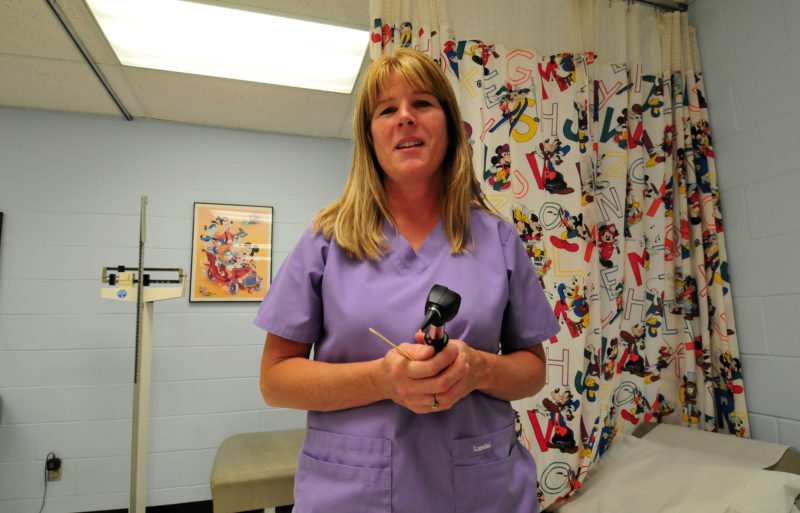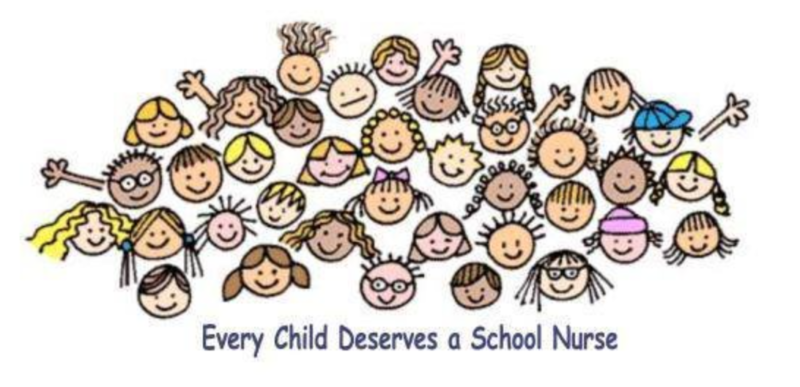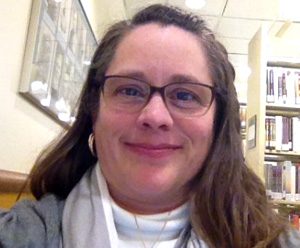 The busiest office at a public school may be the nurse’s station. From managing playground bumps and bruises to administering insulin regimens, tending allergic reactions to food, supplying asthma care, caring for students with epilepsy, and calling parents when a student becomes ill – a nurse’s job is never done.
The busiest office at a public school may be the nurse’s station. From managing playground bumps and bruises to administering insulin regimens, tending allergic reactions to food, supplying asthma care, caring for students with epilepsy, and calling parents when a student becomes ill – a nurse’s job is never done.
So precise and critical is the role of a school nurse that untrained school staff forced into administering medical procedures, such as having to remove a gastrostomy tube from a student, can find themselves in a life or death situation with no choice but to call 911.
“Non-medical personnel don’t have the skills,” says Dana Holladay-Hollifield, a registered and nationally certified school nurse for Prince William County Public Schools in Virginia. “I can’t allow someone else to decide whether a student’s asthma attack has cleared up or whether certain medication has provided relief.”
Frustrated by the school nursing shortage at schools in Virginia, particularly in high-poverty areas, Holladay-Hollifield recently started a social justice campaign that highlights the role of nurses as healthcare providers in schools while stressing the civil rights of disabled and other students to receive equal care.
“Public schools have become medical care settings like a clinic or hospital,” she says. “For some students from low-income households, the school nurse is often their only healthcare provider.”
“Public schools have become medical care settings like a clinic or hospital. For some students from low-income households, the school nurse is often their only healthcare provider” - Dana Holladay-Hollifield
As part of the campaign, Holladay-Hollifield is requesting legislators to pass a bill “that protects the practice of school nurses,” and provides “school nurses daily for all of Virginia’s school children per the recommendations of the National Association of School Nurses.”
Holladay-Hollifield released a Change.org online petition asking that a school nurse be placed in all state public schools, especially those with higher numbers of students with chronic illnesses. Currently, more than 1,400 nurses, teachers, education support professionals (ESPs), principals and others have signed the petition.
The petition states, in part: “Unfortunately, in many cases, school nurses may be the only healthcare resource Virginia children and youth have access to. School nurses have the potential to be community health equalizers in the care of Virginia's socioeconomic disadvantaged and disabled child and youth populations.”
Holladay-Hollifield says protecting students with disabilities or who come from low-income families is a health equity as well as civil rights issue.
“We don’t live on an island,” says Holladay-Hollifield a member of the Prince William Education Association (PWEA). “One of my most important roles for nurses is advocating for the federally protected civil rights of students.”
This issue is most apparent when involving students with disabilities. School nurses are the authorities, for example, regarding student 504 plans which stipulate the accommodations and modifications that a student needs in order to perform in the school setting at the same level as his or her peers.
 In 2016, Virginia school nurse Dana Holladay-Hollifield started a Change.org petition to ensure every Virginia public school has a school nurse.
In 2016, Virginia school nurse Dana Holladay-Hollifield started a Change.org petition to ensure every Virginia public school has a school nurse.
“We have to figure out how a disabled child has equitable opportunity to be on a field trip with other students, for example,” Holladay-Hollifield says. “Many administrators don’t understand that if everyone can’t go on that field trip, it’s discrimination.”
According to Holladay-Hollifield, some school board members, district staff and other administrators are not fully aware that licensed nurses must abide by strict state certification laws, an ethic’s code, and other standards.
“I am bound by my state’s nursing act,” she says. “Any delegation that I do has to be within the law.”
While there is no substitute for having a school nurse on call, school nursing shortages persist nationwide. For example, in Oregon, the ratio of school nurses to students is approximately one to 4,670. In North Carolina it is 1 nurse per 1,110 students. The nationwide accepted ratio is 1 nurse to every 750 students, according to the U.S. Department of Education.
In Virginia, the state’s board of education suggests a ratio, but does not require, one nurse per 1,000 students. State board members are currently considering one school nurse per approximately 600 students.
 Dana Holladay-Hollifield
Dana Holladay-Hollifield
Given the nursing shortage in many districts, it often falls on the shoulders of school staff with little or no medical training to administer shots, tend to stomachaches, and even handle concussions, broken arms, and other emergencies.
“I always feel for teachers and staff who’ve been put in this position,” Holladay-Hollifield says. “You can feel they are petrified because something unexpected might happen and they won’t know what to do.”
Even more, untrained personnel might miss an early sign of an illness or disease that could cause future harm.
“Nurses pick up on things like rashes that could be scarlet fever,” she says. “This could affect the student’s heart. I can’t tell you how many times I’ve called parents about this.”
Some days working as a school nurse can be as unpredictable and stressful as working in a hospital emergency room, says Holladay-Hollifield: “At any moment you can have a life threatening situation and be required to manage the medical emergency for the 10, 15, or more minutes until EMS (Emergency medical Services) arrives.”
Essentially, the school nurse provides direct health care to students and staff, leadership for the provision of health services, vision and other health screenings, all while serving as the primary consultant for establishing health policies and programs. In many cases, school nurses also serve as a liaison between school personnel, family, community, and healthcare providers.
“Nurses are detectives with the training, skills and knowledge to provide quality medical care in a school setting,” Holladay-Hollifield says. “We also refer clients to needed outside resources and follow up with other medical professionals as needed. It’s a difficult job.”
Learn more about school nurses and other health and student services personnel at NEA Education Support Professionals








